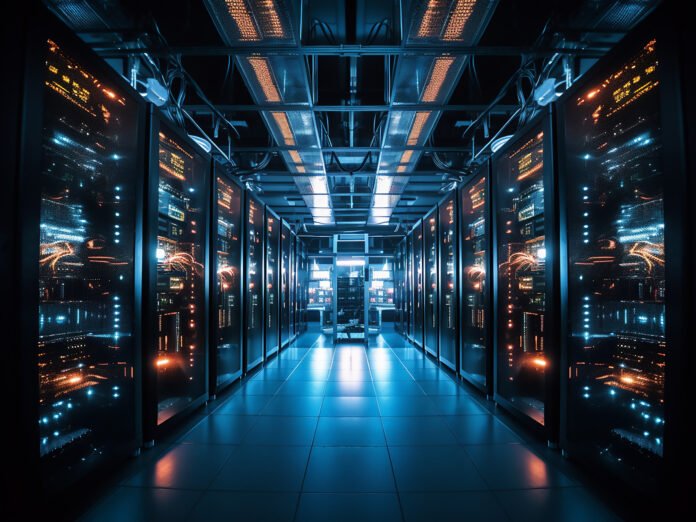As artificial intelligence advances rapidly, one crucial yet often overlooked aspect of this progress is the management of heat in AI systems.
Data center liquid cooling has emerged as a transformative technology, providing a more efficient, sustainable, and robust solution to an increasingly urgent challenge.
Conventional air cooling systems are inadequate for the thermal demands of contemporary AI workloads. Consequently, organizations are adopting innovative cooling strategies to ensure optimal performance and energy efficiency.
In this article, we will examine the key features of liquid cooling and its impact on the data centers that drive the AI revolution.
The Escalating Heat of AI Infrastructure
As AI systems grow in capability, they generate significantly more heat. Traditional air cooling solutions are struggling to keep pace, making advanced cooling technologies essential for preserving system performance and stability.
AI Models Require Increased Computational Power
Currently, AI models, including large language processors and image generators, demand substantial computational resources. To facilitate their complex operations, numerous GPUs and TPUs often operate concurrently, leading to significant heat generation.
While traditional air cooling systems were sufficient for earlier data center configurations, they are inadequate for managing the extreme heat produced by contemporary AI servers.
Failure to effectively regulate this heat can lead to overheating, reduced performance, and potential hardware malfunctions. Thus, implementing a more effective cooling solution is not merely advantageous; it is crucial.
Advantages of Liquid Cooling Over Air Cooling
In contrast to air cooling, liquid cooling in data centers employs specialized fluids to efficiently transfer heat away from essential components. This advanced cooling system primarily consists of two types:
- Direct-to-chip cooling, which channels chilled liquid through pipes directly to heat-conductive plates affixed to the chips.
- Immersion cooling, which involves submerging the entire server in a non-conductive liquid that swiftly extracts heat from all components at once.
Due to their significantly higher thermal conductivity compared to air, liquids can absorb and transport heat more effectively. Consequently, AI chips can operate for extended periods and at higher capacities without the risk of overheating.
Efficiency and Sustainability Combined
Liquid cooling enhances energy efficiency while simultaneously minimizing the environmental footprint of data centers.
By improving both operational performance and sustainability, it presents a more intelligent approach to meeting the growing demands of artificial intelligence.
Energy Conservation and Space Optimization
Beyond its superior heat management capabilities, liquid cooling offers significant energy savings. It greatly diminishes the reliance on large HVAC systems, which are costly and consume considerable energy.
With fewer fans and reduced space required for air circulation, organizations can accommodate more servers within the same physical footprint.
This advantage becomes increasingly important as AI workloads expand. Additionally, by lowering electricity consumption, companies can decrease their carbon emissions, marking a significant achievement in an era focused on sustainability.
Leading Tech Companies Pioneering the Change
Prominent technology firms are taking proactive steps in this area. Companies such as Microsoft, Meta, Google, and AWS are already incorporating liquid cooling into their AI data centers.
Microsoft is even investigating the potential of underwater data centers, while Google has implemented liquid-cooled racks in select locations.
These initiatives highlight an important shift: liquid cooling in data centers is no longer a novel concept; it has become the benchmark for high-performance, AI-driven operations.
As a result, organizations aiming to maintain their competitive edge must embrace this technology or risk obsolescence.
The Future Is Liquid: A Strategic Investment
Embracing liquid cooling technology has evolved from a mere technical option to a strategic initiative aimed at securing the future of AI infrastructure.

As the demand for AI continues to escalate, organizations that invest in liquid cooling at an early stage will establish a significant advantage in terms of both performance and sustainability.
In essence, efficient cooling solutions, such as liquid cooling for data centers, are not merely optional; they are essential elements of the next-generation AI infrastructure. Without these systems, even the most advanced chips cannot operate at their optimal levels.
Moreover, chip manufacturers are increasingly designing hardware that is optimized for, or exclusively compatible with, liquid cooling techniques. This indicates that liquid cooling is becoming a fundamental aspect of the AI hardware landscape.
This trend is anticipated to gain momentum over time. Companies that emphasize liquid cooling now will be in a stronger position to enhance their AI capabilities in the future.
They will benefit from improved processing speeds, reduced costs, and a smaller environmental footprint, all while ensuring their data centers are prepared for future demands.
While transitioning to liquid cooling requires an initial investment, the long-term advantages significantly outweigh the initial expenses. The benefits, including decreased energy usage, enhanced performance, and increased server density, are evident.
Additionally, as the demand for AI continues to rise, the necessity for dependable and scalable infrastructure solutions will only grow.
Consequently, for any organization intent on thriving in the AI sector, the adoption of advanced cooling systems is not merely a technical enhancement; it is a strategic necessity.
Expert Editorial Comment
The advancement of artificial intelligence necessitates a corresponding progression in the design and management of the data centers that support it.
Liquid cooling in data centers represents not merely a technological improvement but a crucial element for the future of AI. By providing enhanced energy efficiency, superior performance, and greater sustainability, liquid cooling is reshaping corporate perspectives on their infrastructure.
As more organizations adopt this innovative strategy, inspired by leading technology firms, we can anticipate the emergence of a new standard that harmonizes performance with environmental stewardship.

